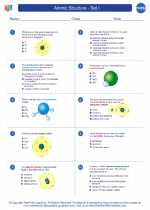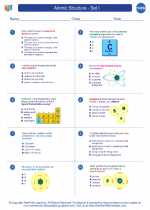Margins in Chemistry
Definition
In chemistry, margins refer to the practice of leaving blank spaces around the edges of a written or printed page. This practice is important for maintaining the readability and integrity of the document. In laboratory settings, margins are often used to record observations, data, and calculations in a systematic and organized manner.
Importance of Margins
Margins serve several important purposes in the context of chemistry:
- Organization: By leaving margins, students and researchers can keep their notes and calculations neatly organized and easily accessible.
- Annotations: Margins provide space for adding comments, annotations, and additional information to the main content of the document.
- Clarity: Leaving margins around written or printed content helps to improve the visual clarity of the document, making it easier to read and comprehend.
Practical Applications
In the field of chemistry, margins are commonly used in laboratory notebooks, research reports, and academic papers. When conducting experiments, students and researchers often use margins to record their observations, experimental procedures, and data analysis in a structured format. Margins also allow for the inclusion of sketches, diagrams, and supplementary information related to the main content of the document.
Study Guide
When studying margins in the context of chemistry, consider the following key points:
- Understand the purpose of margins and their importance in maintaining organized and clear documentation.
- Practice leaving appropriate margins when taking notes or writing laboratory reports.
- Explore the use of margins in scientific publications and how they contribute to the overall presentation of information.
- Consider the practical benefits of margins in communicating scientific findings and data.
- Discuss the role of margins in conveying the precision and accuracy of scientific work.
◂Chemistry Worksheets and Study Guides High School. Atomic Structure - Set I

 Worksheet/Answer key
Worksheet/Answer key
 Worksheet/Answer key
Worksheet/Answer key
